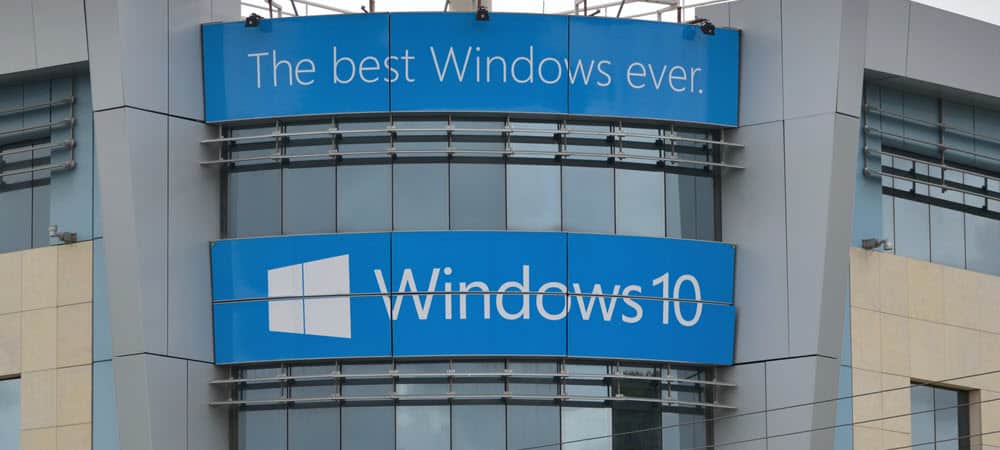The Windows Support Lifecycle determines the support length and availability of product updates, such as security updates and feature improvements. Windows 10 is an exciting release as it pertains to Microsoft’s traditional support lifecycle. Unlike previous releases of Windows, Microsoft delivers revisions of Windows 10 as a service. One of the key benefits of the new service model is the delivery of free revisions of Windows 10 to existing Windows 10 PCs and devices. The latest revision, the Windows 10 Anniversary Update, was released on August 2, 2016. In 2015, Microsoft announced that the company would give existing Windows 7 and Windows 8 users a free upgrade to Windows 10. This copy does not expire and is entitled to revisions and updates for the life of the device. Now that the free upgrade offer has ended, I would like to explore what happens in the future to support Windows 10. Surprisingly, Windows 10 is not that different from its predecessors in this respect.
What Does Lifetime of the Device Mean?
When Microsoft released further details about Windows 10, the company mentioned a new operating systems distribution model feature. Updates and revisions would be made available throughout the life of your device. Windows 10 uses the same life cycle policy of five years of mainstream support and five years of extended support. We all know the average lifespan of a laptop or desktop PC is around five years, seven if you care it well. The conclusion from Microsoft’s pronouncement; as long as the machine is operable and supported by the OEM, Microsoft will continue to support it with updates. So, if the machine still works 5 or 10 years from now, revisions and updates to Windows 10 will be made available to it.
End of Mainstream Support
First, let’s try to understand Mainstream Support. When Microsoft releases a new version of Windows from the day it is available, the company enshrines the product with five years of support. Included within these five years are several support rights and opportunities the end-user can utilize without additional charge. This include:
Request to change product design and features.Security updates.Non-security updates.Complimentary support is included with a license, licensing program, or other no-charge support programs.
End of Extended Support
After five years, several of these services are restricted to a paid model within a new phase called Extended support.
Request to change product design and features.Non-security updates.Complimentary support is included with a license, licensing program, or other no-charge support programs.
Extended support continues with basic security updates for an additional five years after mainstream support ends. One of the key requirements to maintain extended support, the user must ensure Windows is kept up to date. In this case, Windows 7 users will need to have Service Pack 1 installed to continue receiving support and updates until January 2020. For Windows 10, users will need to be running either the Long Term Service Branch, Current Business Branch, and Current Branch depending on your version or edition.
End of Sales
End of Sales occurs when Microsoft stops shipping a version of Windows to retailers and OEMs. The cut-off period varies across versions of Windows. Retail distribution for Windows XP ended eight years after general availability, while Windows 8.1 retail distribution stopped three years after general availability. This means it is based on Microsoft’s discretion on how long the company decides to maintain the availability of a particular version of Windows. Factors can include market trends and hardware requirements. For example, Windows Vista came to market during the Netbook craze. Vista’s system requirements were too high for most Netbook devices at the time. Microsoft decided to provide Windows XP Home for an additional period until a more Netbook-friendly release (Windows 7) came to market. For Windows 10, Microsoft has not determined when retail and OEM distribution will end.
Service Packs
For many years, Microsoft provided Service Packs for revisions of Windows. Service Packs are a collection of updates and fixes for the operating system. In previous years, organizations depended on Service Packs as the barometer for determining when to start deploying a new revision of Windows. Service Packs initially contained feature updates, but the company ended this practice after Service Pack 3 for Windows NT 4. With the advent of Windows Update, Microsoft decided, Service Packs were going out of vogue; since Microsoft’s update service was the best way to have the most current version of Windows. Windows 7 became the last version of Windows to get a Service Pack. Windows 8.1 launched in 2013, returned delivery of Feature Updates such as Update 1 launched in 2014, returning functionality such as a Start button, familiar All Apps menu, and ability to pin Modern apps to the taskbar.
Innovation as a Service
Windows 10 uses a completely different methodology for servicing. These are broken down into three categories: Current Branch (CB), Current Business Branch (CBB), and Long Term Service Branch (LTSB). The availability of each branch is dependent upon the edition and variant of Windows 10 installed. Microsoft does provide updated revisions of the LTSB versions of Windows 10. The 2016 version will be available starting October 1, 2016. Each new revision of the LTSB Windows client requires new KMS (CSVLK) and MAK product keys. Certainly, reading all this only makes it seem more complex. Windows 10 is going through a rapid transition right now. Adopting a model where innovation is delivered as a service. Information regarding the lifecycle and support will continually be redefined as the years ago; at the same time, much of the fundamentals remain the same. Comment Name * Email *
Δ Save my name and email and send me emails as new comments are made to this post.
![]()

